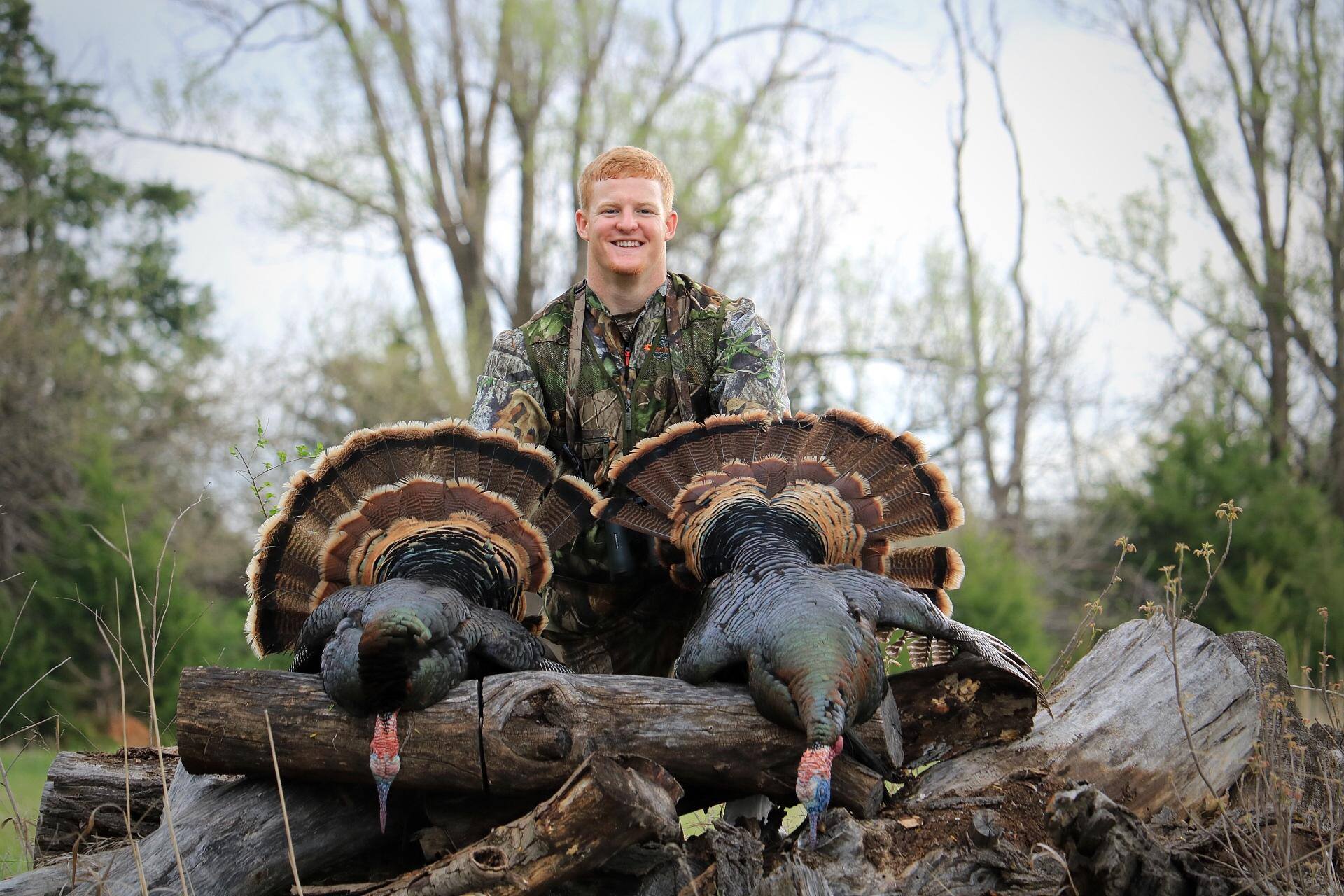Gobbler Getting Decoy Strategies
Filed under: Hunting Blog, Turkey Hunting
Turkey season is in full swing and many hunters are experiencing success. I recently tagged a couple of nice toms in Kansas using two common decoy strategies. I found the first bird strutting in a pasture accompanied by three hens and he quickly fell prey to a tactic known as reaping or fanning. I struck up a gobble soon after bagging my first tom and within a few minutes there was a pair of big longbeards in front of me. The end result was me wrapping my last Kansas tag around the leg of an old Rio Grande gobbler. There are countless ways to use decoys for turkey hunting so I will break some of those methods down into easy to understand steps.

I bagged a couple of nice toms in Kansas using two common decoy strategies.
Know the current breeding phase of the flock you are hunting. In some states, turkey season opens during late March. Often birds are still flocked up and large decoy set-ups with multiple hens and a jake or tom work very well. As the season progresses, flocks break up, males assert dominance, and hens prepare for breeding. The peak breeding phase occurs around the middle of April and this is a great time to use a standing or lay-down hen accompanied by a jake decoy. Most gobblers cannot resist the urge to breed a hen and the presence of an inferior jake will get them fired up. After most hens are bred, they go to nest. Toms and jakes will then be searching hard for any remaining unbred hens. This phase usually occurs during late April or May and one of the best decoy tactics for this time is a single hen looking for love. Montana Decoy offers a full line of turkey decoys to cover any of the situations I mentioned.
Another popular decoy strategy is reaping (a.k.a. fanning). This method uses a real turkey fan or full strut decoy like the Montana Decoy Fanatic XL to approach a tom. It is most effective in open terrain where the hunter can see a gobbler from a ways off. The hunter then crawls behind the decoy until they are within shooting range of the turkey. Be very cautious when fanning a turkey. Safety is important. Have a buddy watching from a distance and be certain no other hunters are in the area.
Another benefit of using decoys is one that many hunters do not consider. They give the eyes of an approaching gobbler something to focus on rather than you, the hunter. Turkeys have excellent vision and will search for the source of the call. Without the presence of a decoy, they may pick out your movement.
Use these tips next time you are in pursuit of a gobbler. One of my favorite sights in the turkey woods is two big toms strutting in tandem, rushing towards the decoys!
Enjoy Creation,
Tyler



